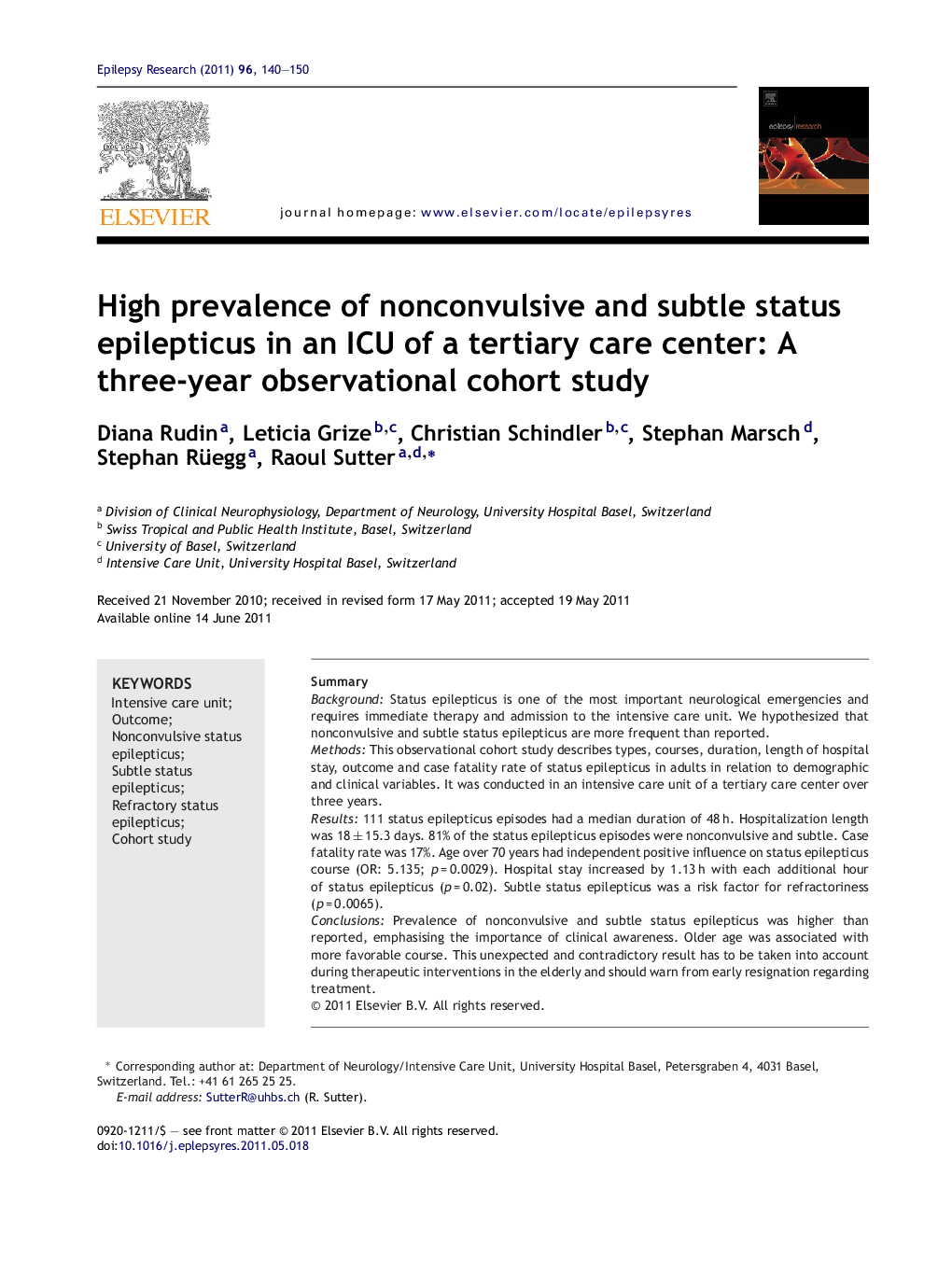| Article ID | Journal | Published Year | Pages | File Type |
|---|---|---|---|---|
| 3052397 | Epilepsy Research | 2011 | 11 Pages |
SummaryBackgroundStatus epilepticus is one of the most important neurological emergencies and requires immediate therapy and admission to the intensive care unit. We hypothesized that nonconvulsive and subtle status epilepticus are more frequent than reported.MethodsThis observational cohort study describes types, courses, duration, length of hospital stay, outcome and case fatality rate of status epilepticus in adults in relation to demographic and clinical variables. It was conducted in an intensive care unit of a tertiary care center over three years.Results111 status epilepticus episodes had a median duration of 48 h. Hospitalization length was 18 ± 15.3 days. 81% of the status epilepticus episodes were nonconvulsive and subtle. Case fatality rate was 17%. Age over 70 years had independent positive influence on status epilepticus course (OR: 5.135; p = 0.0029). Hospital stay increased by 1.13 h with each additional hour of status epilepticus (p = 0.02). Subtle status epilepticus was a risk factor for refractoriness (p = 0.0065).ConclusionsPrevalence of nonconvulsive and subtle status epilepticus was higher than reported, emphasising the importance of clinical awareness. Older age was associated with more favorable course. This unexpected and contradictory result has to be taken into account during therapeutic interventions in the elderly and should warn from early resignation regarding treatment.
